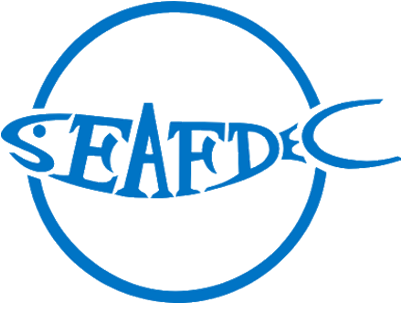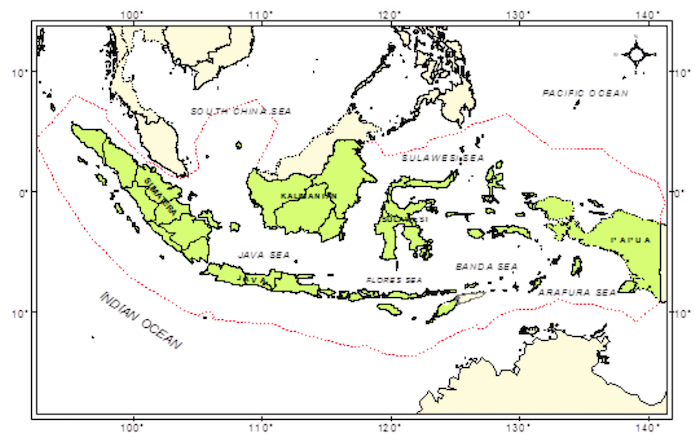Background & Situation Menu
Status and Trends in Fisheries and their Habitats Threats, root causes and barrier analysis Institutional, sectoral and policy context Stakeholder mapping and analysis Baseline analysis and gaps Known Areas of Critical Significance to the Life-Cycles of Fisheries Resources Priority Fisheries Refugia Areas




Establishment of Fisheries Refugia in Cambodia:
Background and Situation Analysis to Support
Status and Trends in Fisheries and their Habitats
The objectives of capture fisheries management in Indonesia are among others to improve the welfare of the fishers, conserve fisheries resources and their environments, and increase foreign exchange earnings. The fisheries sector not only plays an important role in providing food for the nation, but it also serves as a source of employment, income, and foreign exchange. Small-scale fisheries play a dominant role in contributing fish for the domestic market or local consumption. On the other hand, landings for export are mostly derived from semi-industrial fisheries. Most inshore fish resources have been more intensively exploited than those offshore. Accordingly, fisheries in the South China Sea waters of Indonesia require sound management aimed at rebuilding resources and sustaining marine and coastal ecosystem integrity. The central and provincial governments have established a number of fisheries regulations, although there is a need for strengthened enforcement of these. In managing the country’s fisheries, the FAO Code of Conduct for Responsible Fisheries and the ASEAN-SEAFDEC Regional Guidelines on Responsible Fisheries in Southeast Asia have been used as guides by the government.
Indonesian fisheries continue to demonstrate slight increases in landings and their contribution to the national economy. Fish production from both capture fisheries and aquaculture in the South China Sea area is believed to have increased up to 5 percent per annum during the past 10-15 years. Marine capture fisheries production has increased by up to 2 percent per annum during that period. Fish landings for export of tunas and shrimps increased by an average of approximately 8.5 percent and 5.5 percent per annum, respectively. During the same period, the contribution of fisheries to GDP increased at an average of approximate percent per annum. There are a number of landing places for the fleet fishing in the South China Sea, namely those located on the Island of Sumatra (Provinces of Riau, Jambi, South Sumatra, and Bangka Belitung) and Kalimantan (Province of West Kalimantan). Figures 1 provides a map of Indonesian waters, whilst Figure 2 shows the Indonesian provinces that border the South China Sea. On average, fish landings in each province are approximately 200,000 tonnes per year, except in Jambi where landings are rarely more than 50,000 tonnes in a year.

Figure 1.Map of Indonesian Waters, including the South China Sea, Java Sea, Flores Sea, Sulawesi Sea, Pacific Ocean, Banda Sea, Arafura Sea, and the Indian Ocean

Figure 2.Indonesian provinces bordering the South China Sea, including the provinces of Riau, Jambi, South Sumatra, Bangka-Belitung, and West Kalimantan
The bag gillnet (a gillnet fitted with a bag and pulled by a fishing boat) and fish net are commonly used by the commercial sector to exploit demersal fishes. Whilst set gillnets, hook and lines, and tidal-traps are most commonly used by fishers to catch demersal fish, especially in the eastern areas of Sumatra, including Riau, Jambi, South Sumatra, and Bangka-Belitung provinces. Reviews of the demersal fishery and assessment of the distribution and abundance of demersal fish resources indicates that these resources are biologically fully-exploited. While landings fluctuate, marine fisheries in the South China Sea area of Indonesia contribute approximately 500,000 tonnes or more than 10 percent of the total landings of marine fish in Indonesia. Information compiled through fisheries activities of the UNEP/GEF South China Sea Project indicates that Riau Province contributes to almost 60 percent of landings from the South China Sea, followed by West Kalimantan (12 percent), Bangka-Belitung (10%), South Sumatra (9%), and Jambi (9%).
The distribution of fish resources in Indonesian waters of the South China Sea is concentrated in inshore waters. The bulk of marine fish landings are derived from small-scale fisheries conducted in coastal waters. Fishing activities are significantly influenced by the occurrence of the two monsoon periods that alternate on a biannual basis. The fisheries statistics published annually by the Directorate General of Capture Fisheries (DGCF) highlight the wide range of gear types and fishing boats employed in Indonesian fisheries. Specifically, 29 fishing gear types are used, ranging from simple traditional gears, including hand lines, to more complex “modern” gears, including purse seines and long lines. For planning purposes, Indonesia’s marine fisheries sector is divided into small, medium, and large-scale fisheries. Both medium and large-scale fisheries are distinguished from small-scale fisheries by the use of inboard engine powered boats. Similarly, large-scale fisheries are differentiated from medium-scale fisheries based on investment levels and the areas in which they are permitted to operate. In this report, fishing activities are divided into 2 categories.
According to DGCF, all boats powered by inboard engines (typically diesel) can be classified as either medium or large-scale fisheries. Small-scale fisheries, which are the most important in terms of employment, number of fishing units, and quantity of landings, are distinguished from the other categories by type of boat employed. Indonesian marine fishermen in the South China Sea are mostly dominated by small-scale. Small-scale fisheries are defined as those in which fishing is conducting using boats powered by sail or outboard engines. Fishers operating fishing gear without boats are also classified as small-scale. So far, Indonesia’s small-scale fishing fleet has been divided into the following 3 categories:
(i) Dugout boat, i.e., boat made of hollowed-out logs.
(ii) Non-powered plank built boats are divided into small (<7 m in length); medium (7 to 10m), and large (>10 m) categories.
(iii) Out-board motor-powered boats have engines attached to the rear of the boat. Some of these boats use modified gasoline or diesel generators with a long trailing propeller shaft and engine from 2 to 15 HP.
At present, marine capture fisheries in the Indonesian part of the South China Sea are characterized by the use of various types of fishing gear to catch a diverse range of Indonesian fish species. These fishing gears are categorized into commercial fishing gears, including Danish seines, purse seines, drift/gillnets, and traditional fishing gears, including hook and line, trammel nets, lift nets, and traps. However, the fishing gears contributing to the bulk of the landings include Danish seines, purse seines, drift/gill nets, hook and line, and tidal-trap nets.
Key Species:
National marine capture fisheries production of Indonesia in 2012 was estimated at 5.3 million tons, in which 12,94% of the total production was caught from the Indonesian Fisheries Management Area (FMA) of 711 (Karimata Strait, Natuna Sea, and the South China Sea). The big pelagic fish caught from FMA 711 is an estimated 11% of the national production 1,37 million tons. The big pelagic species caught dominantly consist of narrow barred Spanish mackerel, frigate tuna, and little tuna. Meanwhile, the small pelagic fish that caught in FMA 711 were dominantly consisting of Goldstrip sardinella, Jack trevallies, and Short-bodied mackerel.
Demersal fish production from the FMA 711 is dominated by giant catfish, pomfret, red snapper, and rays. Demersal species of noncommercial value, including species of the families Apogonidae, Plotosidae, Pomacanthidae, Platycephalidae, Tetraodontidae, and Ophiidae, as well as juveniles of commercially important species such as the white pomfret (Pampus argenteus) are thought to comprise more than 40 percent of landings. The species are predominantly caught in the tidal trap-net fishery conducted along the east coast of Sumatra and the west coast of Kalimantan. According surveys, catches of tidal trap-nets in coastal waters of Riau Province are dominated by juveniles of Bombay-duck (Harpodon nehereus), hair-fin anchovy (Setipinna spp.), small individuals of black pomfret (Formio niger), marine catfish (especially Arius caelatus), and shrimps. Trawl surveys conducted in Indonesia’s South China Sea areas, there are a number of demersal species, including red eyes fish (Priacanthus tayenus), red seabreams (Scolopsis taeniopterus, Nemipterus tambuloides, and Nemipterus peronii), lizardfish (Saurida undosquamis), and goatfish (Upeneus bensasi), that are frequently present in landings.
The landing of pelagic fishes from the South China Sea fluctuates widely although it has been shown to exceed 160,000 tonnes. Most of the landings, about 72 percent, are from Riau Province, 14 percent from West Kalimantan Province, 11 percent from Bangka-Belitung Province, 9 percent from South Sumatra Province, and 6 percent from Jambi Province. Landings of target pelagic fish from the South China Sea are dominated by Eastern little tuna, fringescale sardinella, Indian mackerel, narrow-barred king mackerel, wolf herring, and anchovies and trevallies. The other important fisheries resource that landed in Indonesian waters of the South China Sea is shrimp. Shrimp fisheries in this area are still limited to waters less than 20 m deep. The gears used to catch shrimp by small-scale and medium-scale fishers include Danish seines, trammel nets, lift nets and tidal-trap nets. Catches are composed of white shrimps (17.36%), endeavor shrimps (17.29%), tiger shrimps (8.98%), and smaller sized shrimps (other shrimps) (56.37%). The smaller sized shrimp catch is composed of the species of genera Metapenaeus, Parapenaeopsis, and Metapenaeopsis. These species dominate shrimp catch in almost all Indonesian provinces bordering the South China Sea. Cephalopod and sea urchin fisheries are also important, particularly in Riau and Western Kalimantan Provinces.
Recent estimates of the National Committee of Fish Stock Assessment published in 2011 showed that pelagic fish stock potential was at 687,6000 tonnes/year, demersal fish at 334,800 tonnes/year, penaeid shrimp at 11,900 tonnes/year, coral fish at 21,600 tonnes/year, lobster at 400 tonnes/year and squids at 2,700 tonnes/year. Meanwhile, the production of the main species group in these fisheries management areas tends to increase from 2005-2010 for the species groups of pelagic, shrimp, and others, while species groups of demersal and squids are increased.
Detailed baseline assessment: a comprehensive report on fish stocks and habitats of regional, global, and transboundary significance in the South China Sea waters of Indonesia was produced as part of fisheries component activities of the UNEP/GEF South China Sea project. This assessment presents available information and data relating the status and threats of important fish stocks, habitats and areas of importance in the maintenance of exploited fish stocks, and existing management regimes, which was used in the planning of national-level actions for the SEAFDEC/UNEP/GEF project entitled “Establishing and Operating a Regional System of Fisheries Refugia in the South China Sea and the Gulf of Thailand” (Fisheries Refugia Project). It is anticipated that this assessment will be updated with new and additional information generated during the implementation of the Fisheries Refugia Project. It will also act as an important reference for determining the effectiveness of management interventions supported by the project.